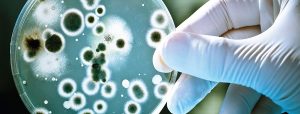The strife to fight antibiotic-resistant bacterial disease has been both incessant and intrepid. But with the advent of a new tool engineered by nanotechnology and the usage of light, has facilitated certain possibilities of bringing this strife to a culmination. Apart from the worldwide endeavours to pre-empt and suppress the overuse of antibiotic drugs, the aforementioned tool serves as novel weaponry in battling these superbugs.
Infinitesimal nano-particles, whose physical magnitude is less than a millimetre, are extremely executable in terms of stability and delivery as well as induction into the cells. This has been ascertained by a consortium of researchers and analysts from the University of Colorado, who have successfully contrived a method of eliminating drug-resistant superbugs without causing damage to the encompassing healthy tissue by utilising nano-scale quantum dots. These are diminutive semiconductor particles with particular light-absorption characteristics.
Once introduced into the body, the quantum dots remain dormant till they are activated by the presence of light shone upon them. This can be facilitated by any visible light source (a lamp, room light or even sunlight). So far the research has focused on topical infections on the skin.
 When activated by light, the quantum dots start generating electrons that attach to dissolved oxygen in the cells, creating radical ions. Those ions interrupt biochemical reactions which cells rely on for communication and basic life functions. In this way, we can target and kill very specific bacterial cells that cause illnesses.
When activated by light, the quantum dots start generating electrons that attach to dissolved oxygen in the cells, creating radical ions. Those ions interrupt biochemical reactions which cells rely on for communication and basic life functions. In this way, we can target and kill very specific bacterial cells that cause illnesses.
Antibiotics are used not just to treat active bacterial infections; they are also routinely given to patients undergoing surgery, and people with compromised immune systems from diseases like HIV and cancer.
Bacteria that are resistant to more than one antibiotic drug – or “superbugs,” as they are commonly called – infect more than 2 million Americans a year, and kill 23,000 of them. Globally, they kill more than 700,000 people each year.
There are several nano-scale medicine counterparts which also engage in a constant feud with infectious bacteria. However, upon exposure to light, they perish all cells around the infected area without excluding the target zone specifically. Hence, they require special tools such as proteins or antibodies that selectively stick to desired cell types, to deliver them to very specific locations. This can only be made possible by a clear and unequivocal knowledge of the target cells.
Thus the use of Quantum dots is a vast amelioration from the previously tried and testing method as it allows more specific targeting of cells to be treated. Quantum dots with different sizes and electrical properties can help establish different disruptive ions. That can allow doctors to choose disruptors to kill invading bacteria without harming nearby healthy tissue.
The activated quantum dots upset the balance of chemical processes, called “reduction-oxidation” or “redox” for short, in disease-causing bacteria in order to kill them. Using this method and only a normal light bulb, the researchers succeeded in obliterating a wide array of antibiotic-resistant bacteria.
These bacteria included sample cells of some of the most pernicious drug-resistant afflictions like methicillin-resistant Staphylococcus aureus; extended-spectrum β-lactamase-producing Klebsiella pneumoniaeand Salmonella typhimurium; multi-drug-resistant Escherichia coli; and carbapenem-resistant Escherichia coli.
However, thus far, this research has been confined to test tubes in controlled labs and will now enter the stage of safe animal testing. If the further assessment turns out to be fruitful, then a novel and effective method of fighting superbugs can take shape and change the entire frame of battling multi-drug-resistant bacteria for both the present and future scope of medicine.









